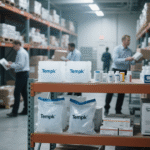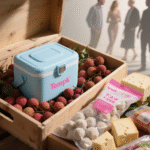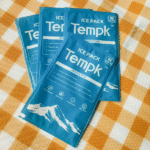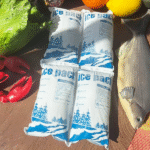Choosing an Ice Pack Supplier: What Cold‑Chain Stakeholders Need to Know
Every successful cold‑chain program—whether it supports a nationwide grocery e‑commerce roll‑out or delivers lifesaving vaccines to remote clinics—relies on more than clever package design. It depends on an uninterrupted flow of high‑performance ice packs, delivered on time, in spec, and at scale. Selecting the right supplier therefore goes far beyond comparing price lists; it is about risk management, quality assurance, and sustainability wrapped into a single purchasing decision.
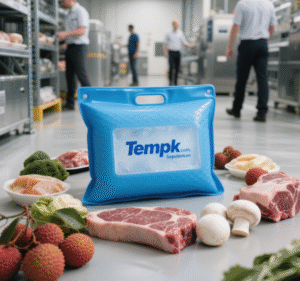
1 . Reliability Starts With Manufacturing Depth
A dependable supplier owns or directly controls multiple production lines, uses redundant tooling, and maintains safety stocks of both finished packs and critical raw materials. Ask for evidence of ISO‑certified facilities, documented preventive‑maintenance schedules, and average on‑time‑in‑full (OTIF) metrics. Suppliers that can shift orders among geographically dispersed plants are better equipped to absorb raw‑material shortages and regional disruptions without delaying customer lanes.
2 . Material Science Matters
Not all coolants are created equal. Modern packs range from –30 °C hard‑freeze bricks to +20 °C controlled‑room‑temperature (CRT) pads. Evaluate suppliers on their ability to formulate phase‑change materials (PCM) with narrow melt bands, low super‑cooling, and minimal volume expansion. Food‑grade films, puncture‑resistant multilayer laminates, and weld‑seam integrity testing should be standard, not optional. Request third‑party migration or toxicity reports if your shipments include edible goods or clinical samples.
3 . End‑to‑End Validation Services
The best suppliers function as technical partners. Look for in‑house climatic chambers, thermal modeling teams, and lane‑simulation labs that can build box‑level qualification data, not just component data sheets. Suppliers who routinely generate ISTA 7D or GDP compliance reports save brand owners weeks of testing and expedite regulatory reviews.
4 . Logistics and Scalability
E‑commerce surges and public‑health emergencies can double coolant demand overnight. Preferred vendors keep regional warehouses, offer drop‑shipping direct to 3PL sites, and provide real‑time inventory portals. They should quote firm lead times under peak conditions and commit to expedited freight in the event of forecast errors.
5 . Sustainability Credentials
As corporate ESG targets tighten, buyers must balance thermal integrity with environmental impact. Prioritize suppliers investing in bio‑based gels, recyclable films, closed‑loop take‑back programs, and life‑cycle‑assessment (LCA) disclosures. Lower‑mass PCM blends that meet performance targets with fewer kilograms of coolant will trim both freight emissions and disposal fees.
Tempk Ice Packs: A Supplier You Can Build a Cold‑Chain Around
Tempk couples deep manufacturing capacity—three ISO 9001/14001 plants across China—with a proprietary PCM library covering –30 °C to +8 °C melt points. Each pack features a five‑layer, knife‑puncture‑rated film and a food‑contact‑compliant, non‑toxic core proven for 120 freeze–thaw cycles. In‑house CNAS‑accredited labs generate complete ISTA 7D lane profiles within ten days, while regional hubs in the US and EU keep four‑week buffer stocks for rapid deployment. A closed‑loop return scheme, backed by LCA data, cuts plastic waste up to 45 %. From turnkey validation to just‑in‑time replenishment, Tempk delivers the consistency, technical depth, and sustainability modern cold‑chain operators demand.
















